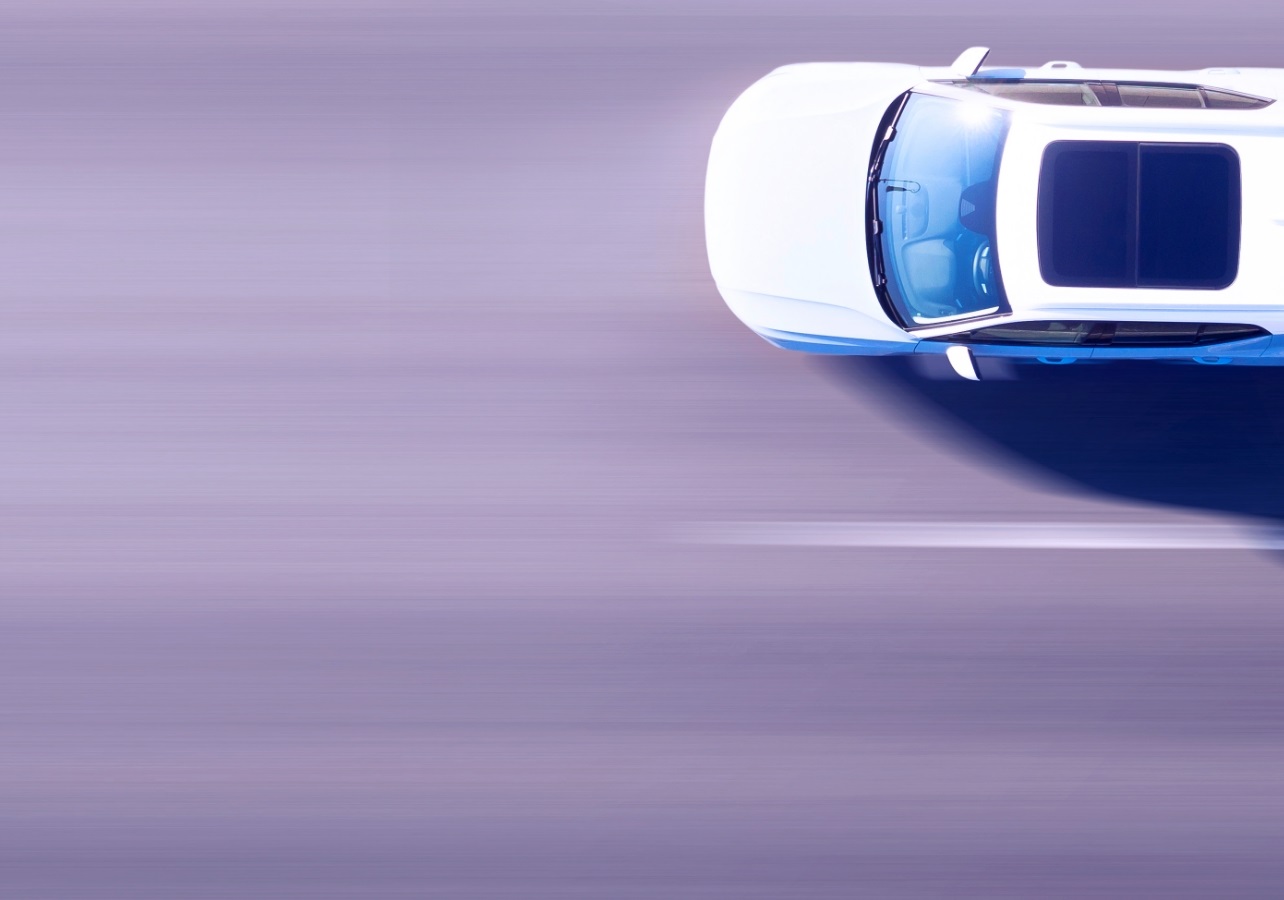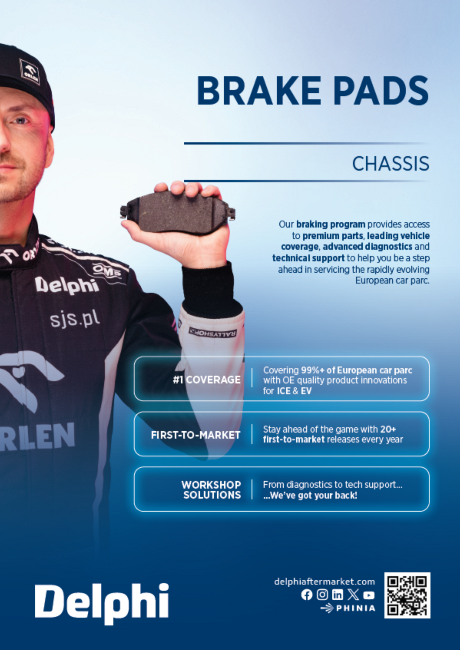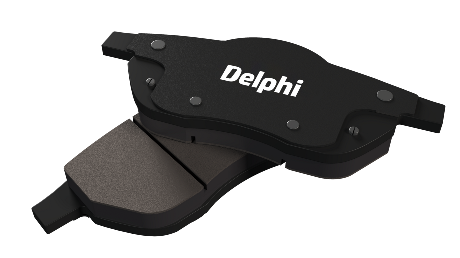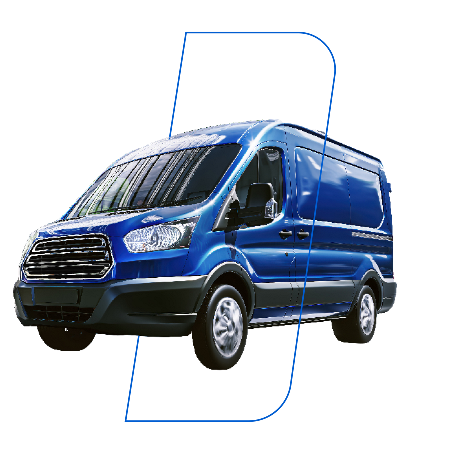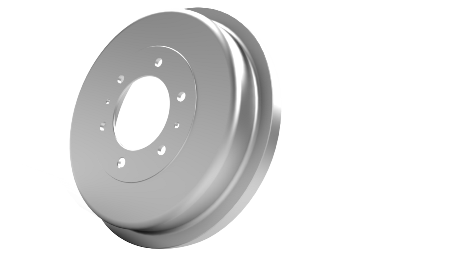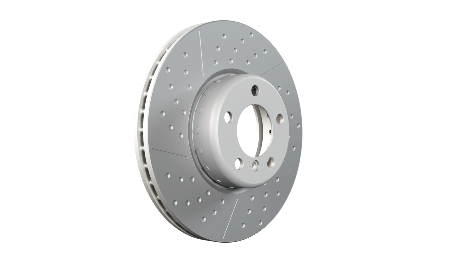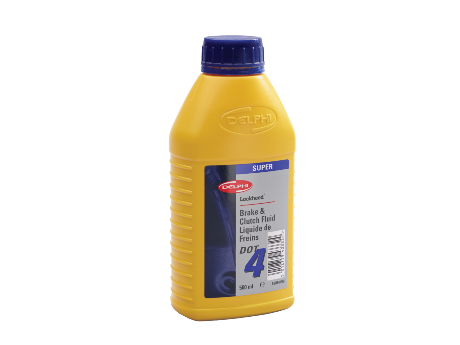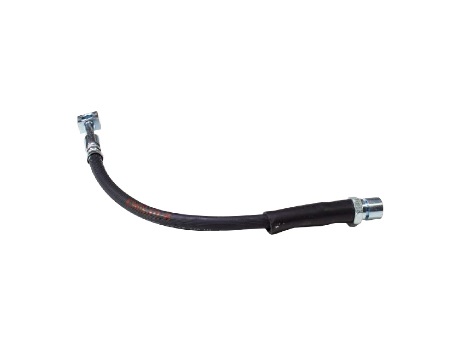Brake Discs

- Product Information
- Product Resources
- Enquire
- Related Products
ECE R90 certified brake discs
It should come as no surprise that our brake discs for new vehicles launched post 1 st November 2016 are R90 certified, alongside a range for popular older applications. After all, we’ve been meeting these quality standards for many years. The only difference today: our discs now undergo official ECE R90 testing schedules including performance, dynamic friction comparison, high load integrity and thermal fatigue analysis to certify that they perform to a prescribed tolerance of the OE part.
Learn more about Delphi’s R90 certified brake discs and why it matters.
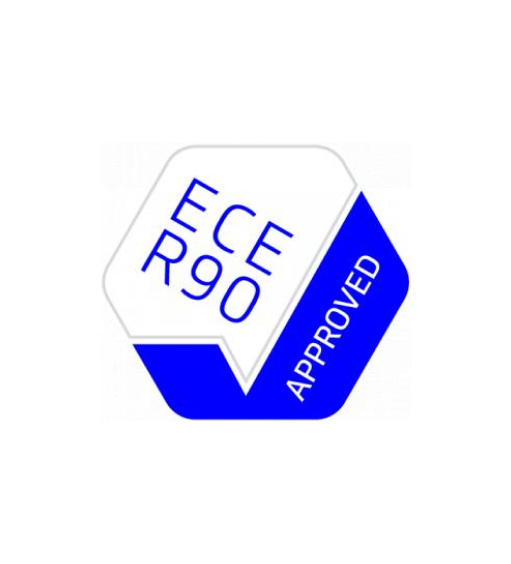
Fully coated brake discs
Thanks to a special zinc-flake, silver Geomet coating, our coated brake discs offer greater and longer-lasting corrosion protection compared with many oil-dipped or partially painted and coated equivalents, whilst also being more cosmetically appealing. And because they have no oil to clean off, they save valuable labour and service time. All this makes for a better protected disc that’s easier to install, easier to dismount as well as being easy on the eye too.
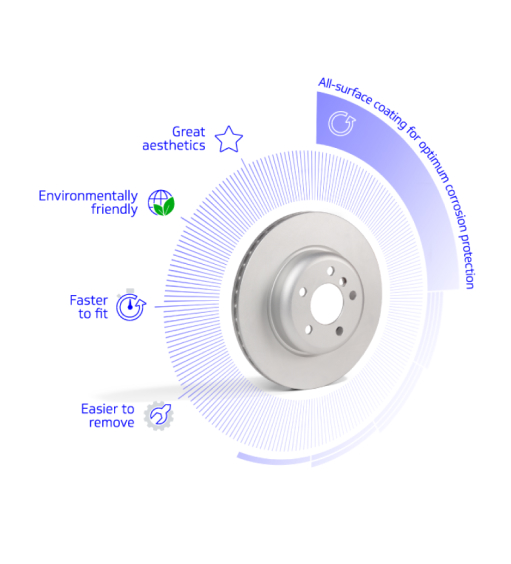
High-carbon brake discs
The added carbon content in our high-carbon discs helps to both reduce the risk of thermal cracking under high-temperature loads, and allows the discs to operate at a cooler temperature, for a more consistent braking performance. It also increases their resistance to distortion or warping for added durability, while delivering noise and judder free braking.
Cross-drilled brake discs
As well as looking cool from behind your wheels, our cross-drilled discs will keep your brakes feeling the same way – cool. The cross-drilled holes dissipate heat, brake dust and gases, helping to keep the pad surface cool and clean and reducing the risk of thermal distortion and warping. These same holes also prevent a film of water forming during wet conditions for improved braked response.
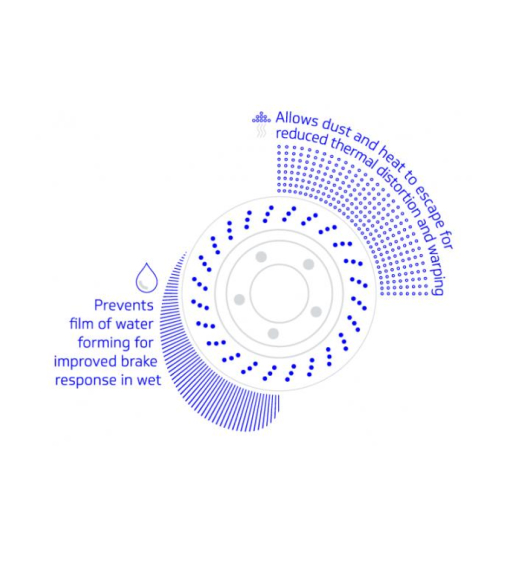
Vented brake discs
Our vented discs feature special internal cooling passages to maximise airflow. By continually moving air across the disc’s surface or through the disc itself, they allow more heat to be dissipated, improving both cooling capacity and resistance to cracking from thermal shock.
Brake discs with bearings
To avoid damage to the bearing during removal, and ensure the correct pressing in into the new, we offer a range of discs with these safety critical components already pre-mounted. They also include both toothed and magnetic ABS sensor rings, as per the OE, and the relevant fixing accessories. All for quick and accurate installation.
One-piece cast iron brake discs
Our one-piece cast iron discs offer an aftermarket alternative to BMW’s patented two-piece bi-metallic composite disc. Engineered from a single piece of cast iron, they deliver the same standards of consistency, longevity and braking performance as the two-piece disc, but at a fraction of the price. And to top it off, they come with fixing screws for quicker and easier fitting.
The Delphi Difference
-
100 years of OE experience, supplier to the world’s top automakers
-
OE heritage and knowledge built into every aftermarket part
-
Comprehensive portfolio for a wide range of vehicles and model years
-
Streamlined SKUs for easy inventory management
-
Support through tools, tips and training

Related product resources and downloads
Resource Highlights
Here, we provide a quick overview of the most important vehicle warning lights and explain why you should never ignore them.
With the increasing electronic content in modern vehicles comes a multitude of new dashboard warning lights. And since cars can now effectively self-diagnose, these lights will communicate important error messages and faults, alongside less critical information. Worryingly, however, a recent survey suggested that nearly half of all motorists don’t understand what they mean. Do you? Here, we provide a quick overview of the most important lights and explain why you should never ignore them.
Some warning lights aren’t cause for concern; they’ll simply go out once the car’s running. Others are a sign, usually the first sign, that something’s not right. This could be a minor problem, such as a faulty sensor or loose wire, or something a whole lot more serious – a red warning light - which will require immediate attention. Either way, if illuminated whilst driving and left unchecked, they could be unsafe or cause long-lasting and costly damage, so you’ll want to get it checked.
Brake system warning light:
As well as a reminder that you’ve left your handbrake on, this could indicate a fault with the brake system, such as wear to your brake pads or discs, low brake fluid level or an issue with the anti-lock brakes. Since your brakes are safety critical, you’ll want to get this checked out by a qualified technician immediately.
.jpg?sfvrsn=710943a_1)
Engine warning light:
As a rule of thumb, the check engine or ECU light only comes on if there’s an emissions related fault. If this light illuminates, the car will still function, but could switch into what’s known as ‘limp home’ or ‘safe’ mode with reduced performance, to protect itself. Either way, it will require immediate attention, to prevent any longer term and potentially irreparable damage

Power steering/EPS warning light:
This indicates an issue with your power steering, causing your steering to become heavy. This can be annoying at lower speeds, but could have much more serious consequences at higher speeds, especially if you need to manoeuvre quickly. It’s therefore important to have it checked out straight away by a professional.

Diesel particulate filter (DPF) warning light:
Most modern diesel vehicles are fitted with a DPF, which removes harmful soot from the exhaust. Much like a hoover, this can become blocked and will need to be emptied. If this happens it will trigger a warning light, which for the most part is nothing to worry about – driving for 10 minutes or so at speeds over 40mph will normally clear it. However, you should never ignore this light as a completely blocked DPF can be expensive to replace and cause damage to the engine.
-warning-light.png.jpg?sfvrsn=d10f94b3_1)
Airbag warning light:
Whilst this can indicate that the airbag has been switched off manually, it can also signal a fault. A defective airbag may not deploy in a crash. Alternatively, it could go off for no reason. Both risk injury and can be expensive to resolve, so it pays to get it sorted.

Coolant warning light:
This can signal that your coolant levels are running low and will need topping up, or that your engine is overheating. This could be the sign of a system leak, or a larger problem such as a gasket head failure. Either way, it’s advisable to get it seen to as soon as possible to avoid any further damage.
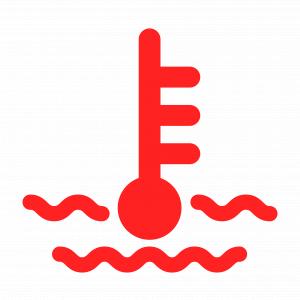
Oil warning light:
This can suggest one of three things; the temperature of the oil is too high or the level or pressure is too low. Unfortunately, if this light comes on, it might already be too late, since the engine may have been starved of oil, and thus lubrication, damaging the internal components and resulting in a potentially expensive bill. So if you see this light, pull over safely and seek immediate attention.

Tyre pressure moniotor warning light:
If your car is equipped with a monitoring system, sensors in the wheel will detect any loss of tyre pressure and trigger a warning light on your dashboard. This could indicate a gradual reduction in pressure or a puncture. Just remember, if you’re topping up the tyre with air, you’ll need to reset the system.
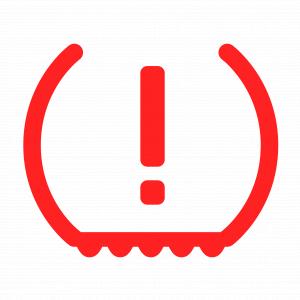
ABS warning light:
This can indicate a number of issues, ranging from a faulty sensor to a defective ABS pump. If you have a wear sensor installed, it may also signal that you need to replace your brake pads. If the ABS warning light is illuminated, chances are your brakes are not functioning correctly so you’ll want to get it inspected immediately.
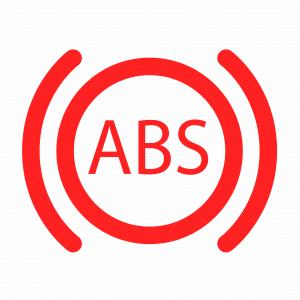
Battery warning light:
This light should switch off a few seconds after you start your engine. If it doesn’t you could have a problem with your electrical system such as a faulty battery or alternator. Critically if the alternator isn’t charging the battery, you could run out of electrical power and come to a halt. Start by turning off anything that draws power from the battery such as the radio, A/C etc and then seek professional help. In the interim, it’s advisable not to switch off the engine, until you’ve reached a safe place, in case it doesn’t start again.


Visit our Technician Library for access to Documents and Downloads
Get in touch
The full Delphi product range
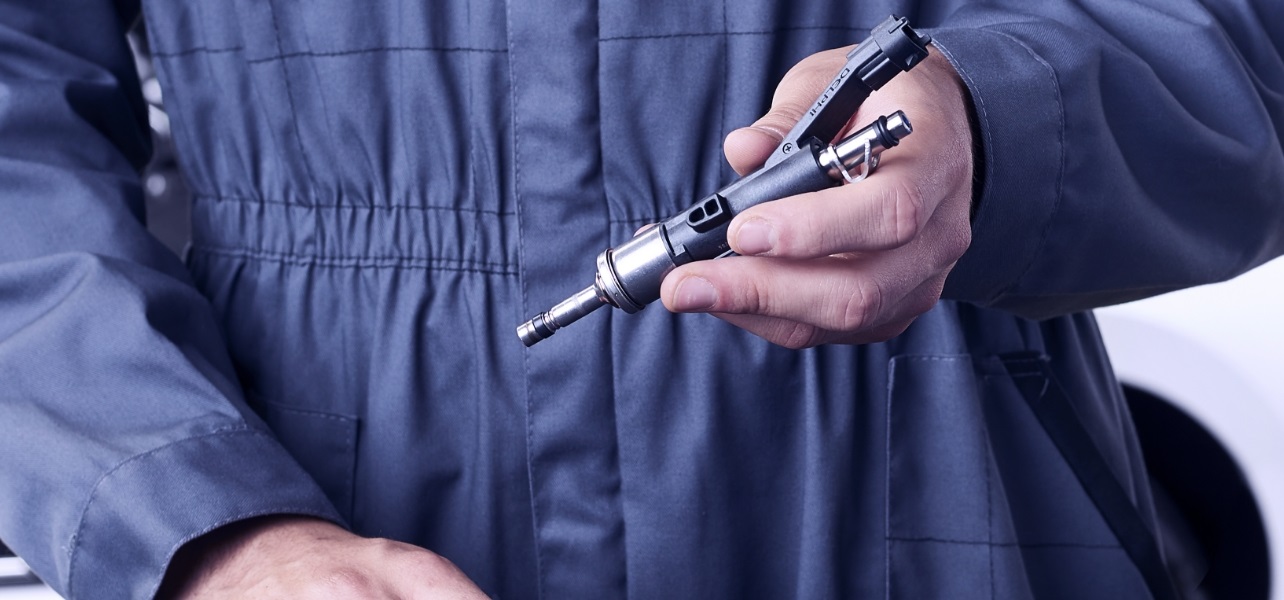
Find out where to buy Delphi parts
